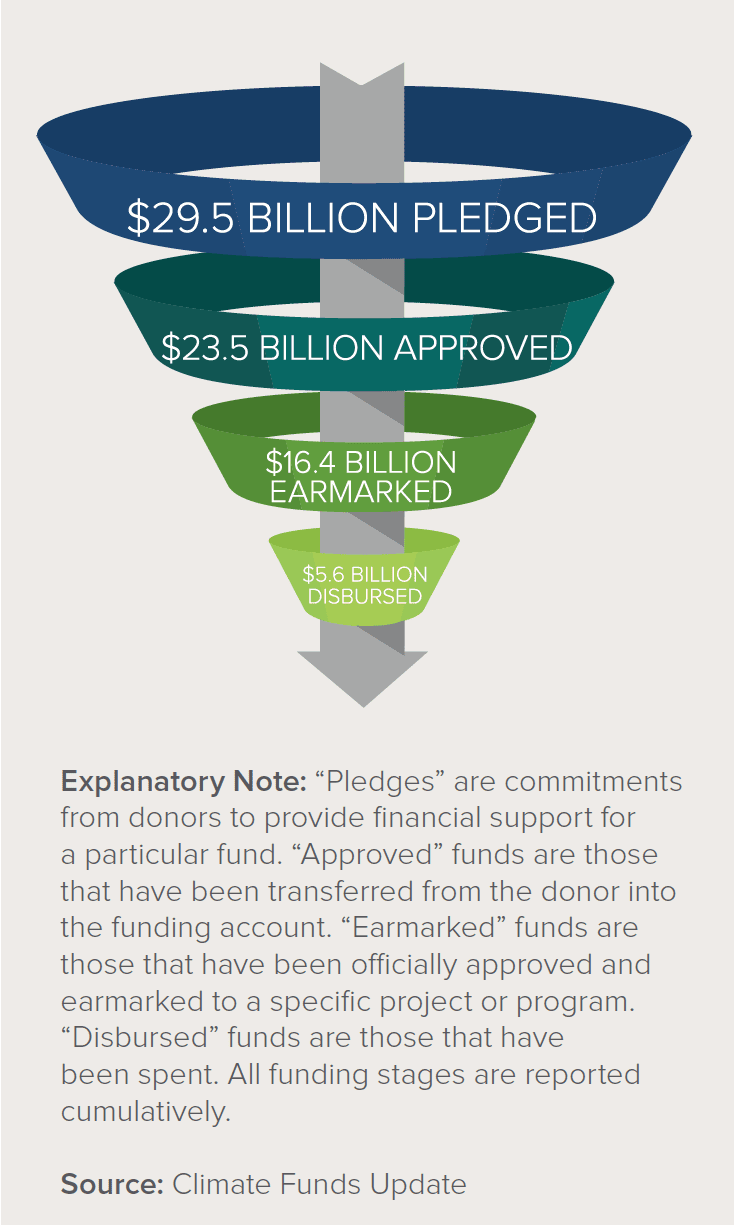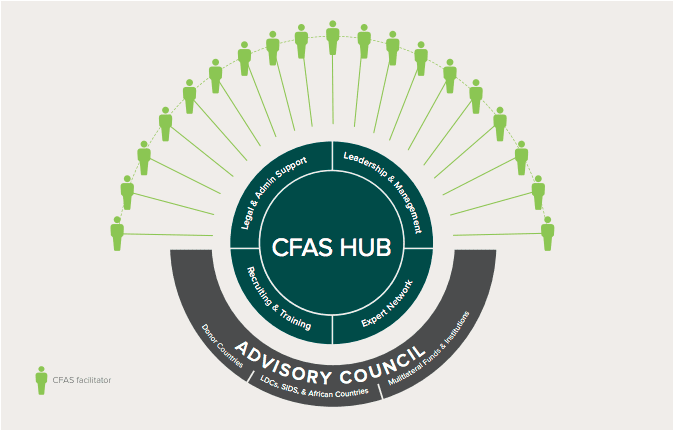Aerial view of Shanghai City highways

Unsnarling Climate Finance Gridlock
For developing countries seeking financial support for climate investments, navigating the global climate finance system is akin to exploring a foreign city without a map. There are billions of dollars managed by hundreds of funds—each with their own applications, funding requirements, and approval processes. Along the way, developing countries may encounter speed bumps from cumbersome applications or U-turns due to shifting donor priorities. At a time when the health of our planet depends on the pace of the energy transition and our ability to adapt to climate change, getting to the destination quickly matters a lot. Larger developing economies may have the resources and experience to navigate this complex system successfully, but capacity-constrained and low-income countries keep hitting a dead end.
Climate finance gridlock not only causes the inefficient and slow allocation of climate finance, but it also creates political tension. Developed countries—the primary providers of public climate finance under the Paris Agreement and its antecedents—experience frustration as they try to scale up their funding for climate solutions. Meanwhile, developing countries—and particularly least developed countries (LDCs), small island developing states (SIDS), and African countries—grow frustrated trying to access theoretically available program support. In addition, projects that do receive funding may be seen as driven by the interests of donor institutions, rather than the priorities of low-income countries.
While there is no single solution, one of the most effective strategies may also be one of the simplest: deploying dedicated climate finance experts into low-income countries to help structure and secure financing for climate investments. To explore this idea, Rocky Mountain Institute (RMI) conducted a market survey from January to July of 2018, interviewing over 70 stakeholders on the barriers to accessing climate finance and potential strategies for making finance flow more efficiently.
Based on this extensive market testing, RMI developed the concept for a Climate Finance Access Service (CFAS), a network of dedicated and independent climate finance facilitators who would work in low-income countries. During their two-year tenure, facilitators would focus on securing finance for a country’s priority climate investments, serving as the connective tissue between recipient countries and the diverse funding sources that low-income countries need to achieve their climate objectives. The report Market Testing a Climate Finance Access Service summarizes the market survey and outlines the CFAS concept.
Why CFAS?
Numerous initiatives have emerged to support developing countries in honing their mitigation and adaptation plans with a view to improving policy and regulatory environments for climate investment, yet a capacity gap at the project level still remains. Existing programs often focus on planning and analysis (e.g., creating sectoral plans and improving enabling environments for investment), rather than developing projects and structuring finance for specific investment opportunities. In addition, existing initiatives tend to approach the problem by developing online platforms, hosting workshops and trainings for overworked in-country officials, or deploying short-term consultants. As a result, there is a critical gap in terms of sustained, in-country capacity.
The Where and What of CFAS
While there are many initiatives designed to assist developing countries in accessing finance, CFAS is designed to meet the needs of LDCs, SIDS, and African countries interested in participating. Country selection could theoretically be prioritized based on the ambition of the countries’ Nationally Determined Contributions under the Paris Agreement, those countries with the most serious limitations in human capacity, and/or countries deemed climate finance ready.
CFAS would include a network of climate finance facilitators recruited and trained in cohorts. An intensive training program would provide facilitators with the technical skills to identify financing options, structure finance, and help build productive relationships with representatives from key climate finance institutions.
While public funding plays a paramount role in supporting low-income countries, our market survey revealed the importance of mobilizing private finance as well. Facilitators would therefore be trained in blended finance solutions, with an emphasis on using public finance to leverage private investment.
In addition to increased assistance in structuring and securing finance, the market survey highlighted the need for facilitators to help with coordination—both between providers and recipients of finance as well as across ministries within country. Facilitators would therefore coordinate otherwise disparate national offices, while also serving as a bridge to the international donor community.
The Who and How of CFAS
Our market survey revealed that CFAS should prioritize facilitators from the recipient country or region, illustrating the importance of local knowledge and trust. CFAS would aim to recruit professionals from the region, and would seek individuals with 1) technical expertise in facilitating complex investments, 2) knowledge and experience working in the national political context or with international climate finance institutions, and/or 3) expert relationship-building and facilitation skills.
Experts interviewed during the market survey converged around the importance of building long-term capacity. Therefore, CFAS would embed facilitators directly in government for at least two years with the opportunity for a subsequent facilitator to ensure continuity in-country. CFAS could propagate learnings in the community by pairing facilitators with civil servants and in-country officials, partnering with existing organizations to host trainings, or establishing partnerships with local universities.
We envision CFAS taking the form of a “hub and spokes” model, where a central hub provides administrative and technical support to facilitators—the “spokes” located in various countries. An advisory committee with representation from LDCs, SIDS, African countries, multilateral funds and institutions, and developed countries would provide support to the hub as well as access to experts and resources. In terms of the operational structure, CFAS could be established as a new program of an existing initiative; a partnership of multiple governments, institutions, and/or civil society organizations; or a completely independent entity.
What’s Next?
Rocky Mountain Institute does not intend to establish CFAS as an RMI initiative—we aim to serve as a catalyst. We understand that to be successful, CFAS needs to draw on the strengths of several organizations. Having completed this market survey, we seek to assemble a consortium of partners to operationalize this concept. Central to the CFAS model is the need to operate at scale, to reduce costs and ensure a robust network of facilitators. The goal is to recruit, train, and embed eight facilitators in-country starting in 2020, and to ramp up to 30 facilitators by 2022.
Over the past decade, both supply and demand for climate finance have increased. However, system complexities, lack of country ownership, and capacity constraints have presented many roadblocks for low-income countries. By deploying facilitators, the Climate Finance Access Service would help low-capacity countries navigate the twists and turns of the climate finance landscape, ultimately helping mobilize investment along a low-carbon, climate-resilient pathway—and fast.

